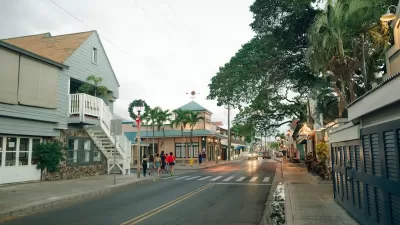Has the renaissance of our urban cores petered out or will the movement of suburban refugees to denser metro neighborhoods continue? Let's see what demographics and economics tell us.

During the recession and post-recession years, between 2006 and 2015, urban areas around the country saw a major influx of new residents as millennials and former-suburb dwellers moved into downtowns and denser urban neighborhoods. Writing in Medium, economist Lyman Stone seeks to find out if this inflow migration to urban cores is a lasting phenomenon or just a "migration bubble." He finds that part of the inflow explanation was driven by cheaper housing in urban areas at the beginning of the recession.
Migrants moved in pursuit of cheaper housing during the recession, with many foreclosed on, and fewer pursuing ownership. This wasn’t because they wanted a better home or a better neighborhood: those reasons became less prevalent. It’s because the relative costs of urban renting suddenly became much more favorable.
As prices in the urban core have increased in comparison to housing costs in suburban areas, the inflow migration has slowed. Essentially, Stone explains, the imbalance that saw people move into urban areas is shifting back to where we were pre-recession as suburbs become the more affordable option once again.
When we look at the last few years of migration, we should see it as a bubble. It was never going to last very long, and was always the product of essentially transient imbalances of in costs that migrants rapidly arbitraged. We are now returning to the normal state of suburban and exurban inflows, and urban outflows.
FULL STORY: How the City Almost Came Back

Study: Maui’s Plan to Convert Vacation Rentals to Long-Term Housing Could Cause Nearly $1 Billion Economic Loss
The plan would reduce visitor accommodation by 25,% resulting in 1,900 jobs lost.

North Texas Transit Leaders Tout Benefits of TOD for Growing Region
At a summit focused on transit-oriented development, policymakers discussed how North Texas’ expanded light rail system can serve as a tool for economic growth.

Why Should We Subsidize Public Transportation?
Many public transit agencies face financial stress due to rising costs, declining fare revenue, and declining subsidies. Transit advocates must provide a strong business case for increasing public transit funding.

How to Make US Trains Faster
Changes to boarding platforms and a switch to electric trains could improve U.S. passenger rail service without the added cost of high-speed rail.

Columbia’s Revitalized ‘Loop’ Is a Hub for Local Entrepreneurs
A focus on small businesses is helping a commercial corridor in Columbia, Missouri thrive.

Invasive Insect Threatens Minnesota’s Ash Forests
The Emerald Ash Borer is a rapidly spreading invasive pest threatening Minnesota’s ash trees, and homeowners are encouraged to plant diverse replacement species, avoid moving ash firewood, and monitor for signs of infestation.
Urban Design for Planners 1: Software Tools
This six-course series explores essential urban design concepts using open source software and equips planners with the tools they need to participate fully in the urban design process.
Planning for Universal Design
Learn the tools for implementing Universal Design in planning regulations.
City of Santa Clarita
Ascent Environmental
Institute for Housing and Urban Development Studies (IHS)
City of Grandview
Harvard GSD Executive Education
Toledo-Lucas County Plan Commissions
Salt Lake City
NYU Wagner Graduate School of Public Service



























